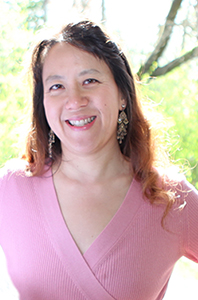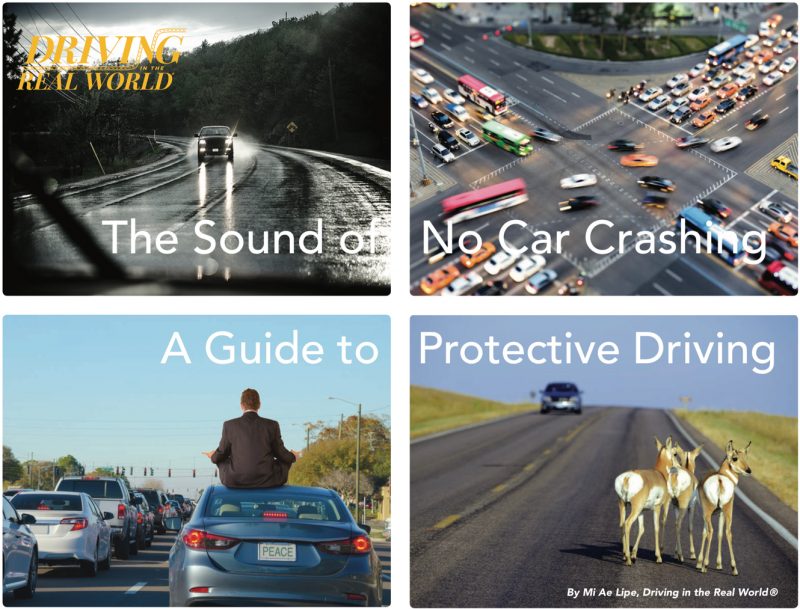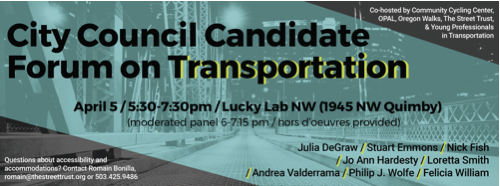Mi Ae Lip is a safe driving advocate who speaks important truths to a crucial audience.
—
One of the many things I do that annoys my two (teen and pre-teen) daughters is that I drive exceedingly slowly and cautiously. I have this thing where I tell them — not to be braggadocious, but to make a point — that, “Just imagine: If everyone drove like I did, there would be no crashes and no one would ever get hurt or killed on the road.” They of course roll their eyes and say, “Oh boy, here goes dad again.”
But it’s true: If every person behind the wheel was as scared-straight as I’ve become after being a daily bike rider for 30 years and having a job for 13 of them where I consume a daily stream of information about horrific crashes and have met hundreds of people directly impacted by them — our streets would be pretty chill.
In our push for safer streets, we usually talk about infrastructure, enforcement, and educating people about drunk driving, rules of the road, and so on. What gets left out is a more holistic look at how we drive.
That’s why I was so happy to come across the work of Mi Ae Lipe, an advocate who lives near Seattle. Mi Ae is a driving expert who writes a column for a BMW owner’s club magazine and consults with agencies and nonprofits about safety. In 2017 she was a co-recipient of the National Highway Traffic Safety Administration (NHTSA) Award for Public Service. Mi Ae wants to re-educate American drivers.
Here’s a snip from her website, DrivingInTheRealWorld.com:
“American driver training generally fails to teach new drivers the complexities of modern roads and equip them with proper situational awareness. This and other factors contribute to the United States ranking a dismal 29th out of 30 developed nations in traffic deaths. Let’s change this by exploring honestly what makes us the drivers we are and by approaching traffic safety as an entire ecosystem, not fragmented bits. That change can begin with you, today, as an individual driver.”
Her new e-book, The Sound of No Car Crashing: A Guide to Protective Driving, has a great section on “What makes a good driver”:
“Good drivers understand that there are very few true “accidents.” Over 90 percent of crashes are caused by human error and are fully preventable. By not calling a crash an accident, we take responsibility for it.
“We drive exactly how we are as people in terms of our personality, ego, habits, life values, ability to plan, con dence levels, social skills, and general outlook. Do you care about who you are as a person and a driver?
Good drivers know that others are watching. That means friends, family, children, colleagues, and strangers. Humans imitate others. By the time your children are learning
to drive as teenagers, they’ve been watching you for at least 15 years, and deprogramming bad learned behavior is going to be tough. So, it’s never too early to start being a good role model.”
Mi Ae’s idea of “protective driving” also intrigued me. She uses it instead of the popular term “defensive driving.” “‘Defensive’,” Mi Ae writes, “suggests danger and has negative connotations of competition and possession, when the goal should be to drive for the protection of yourself and others.”
Wanting to know more, I emailed Mi to ask how her work relates to cycling and the safety of people who do it. Here’s what she wrote back (with an email signature that made me smile, “Sent from my iPhone, but not while driving!”):
Why you think bicycle riders should be interested in the idea of “protective driving”?
“I think everyone — not just vehicle drivers — should be interested in protective driving. For a bicyclist, that can mean making space for fellow cyclists, pedestrians, and vehicles; waiting patiently for someone to finish crossing the road without pressuring them; consistently obeying red lights and stop signs as a matter of consistency, habit, and fairness; properly communicating your presence with your position in the road, highly visible clothing, proper lighting, smiles, and friendly waves; and being proactive and hyper-situationally aware for how your path might intersect with those of others.
Different road users frequently split into their own tribes, which can become rather self-righteous and antagonistic. People get really possessive about space on the road and they often take things too personally and angrily way too quickly. Yes, that SUV driver absolutely should have been watching out for you as she made that right turn in front of you, but she also might not know how to properly check her mirrors for your presence or even be aware that her bulky B-pillars blocked her view of you. It is also partly your responsibility to compensate for the deficiencies of drivers. Yes, it can feel very frustrating and unfair sometimes, but on the other hand, it often does no good to be angry and let emotion cloud your judgment, especially when you need it rather quickly to deal with the next scenario.”
Are there parts of your teaching that are specific driving around walkers and bicycle users?
“A section in my e-book covers common vision issues that afflict all humans, and it is based on the wonderful writings of a Royal Air Force fighter jet pilot named John Sullivan. Pilots of this caliber are educated on the biological deficiencies and strengths in human vision and how they affect our perception and judgment. One example of this is the saccade, which is a gap in our vision caused when our eyes are moving. We actually can’t see or register images accurately in our brain unless our heads are still (even for a moment), so those hurried glances that we absent-mindedly make across a scene mean that we may be missing a lot, including small, narrow objects like bicycles and motorcycles. Once you know this simple fact, that can explain many near-misses in your past—you literally couldn’t see what you were looking at.
Another important thing to realize is that if you don’t expect to see something, you are that much more likely to miss it even if it is present. People engrossed in what they were doing have been known to completely miss a person dressed in a gorilla suit walking in their midst or even big trucks right in front of them. This means you should always go into a situation expecting to see the unexpected.
Another topic in my book is how to break bad habits. This includes drivers stopping in the middle of crosswalks (not before them), people not communicating properly, and watching for pedestrians at all times. Once you understand that we all have innate vision deficiencies, then it becomes more apparent that every one of us — regardless of the type of road user we are — just need to slow down to give us more time to process the situation, do a better job of planning ahead, and actually pay attention to what’s happening all around us and not be distracted.”
I hope Mi Ae’s work reaches as many people as possible. As a driving advocate who works in the automotive world, she has the respect and credibility as a messenger of this information that most people reading this site will never have.
You can download a copy of her e-book from www.DrivingintheRealWorld.com for free until April 1st. Follow Mi Ae on Twitter @DrivingReal.
— Jonathan Maus: (503) 706-8804, @jonathan_maus on Twitter and jonathan@bikeportland.org
Never miss a story. Sign-up for the daily BP Headlines email.
BikePortland needs your support.
The post Putting the Vision Zero focus on how we drive appeared first on BikePortland.org.
from Latest headlines from BikePortland https://ift.tt/2GjHA7w




No comments:
Post a Comment